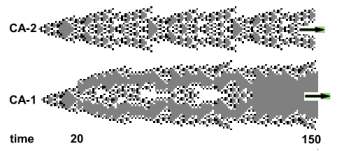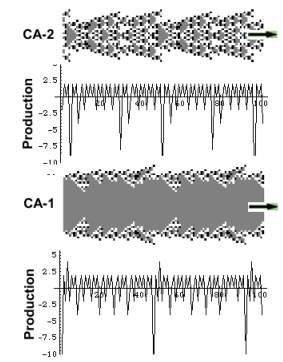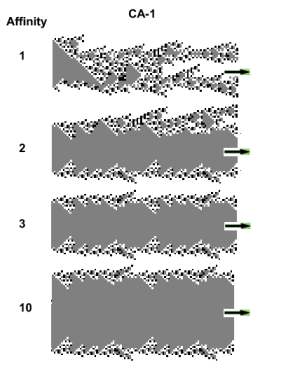 |
Solution
 |
The following picture depicts the two CA and their production profiles.
 |
 |
A stationary process responds to external perturbation
(injury) in four ways:
1. No change,
2. A new
stationary oscillating attractor
3. Chaotic
oscillations
4. Death
When the CA settles at a stable attractor, its response is regarded here as a solution which it created in response to the perturbation .
A chaotic oscillation is not a
solution since it is unstable. Throughout the chaotic phase CA
seeks a solution otherwise it dies. The
fate of an isolated CA is controlled
by a triplet : {state, rule#, max age}. A solution is defined as a stable quadruple: {perturbation,
state, rule#, max age: stable}, which is the key feature of WOB.
The body is continually exposed to perturbations for which WOB always
finds (creates) an optimal solution, as manifested by Homeostasis (Homeorhesis).
Homeorhesis is always an optimal solution.
We shall therefore focus on solutions in general, and optimal solutions in particular. The last image illustrates what is meant. The first two CA are chaotic and therefore are not solutions. CA whose affinities are 3 or greater, are solutions yet less and less optimal (healthy)
Setup